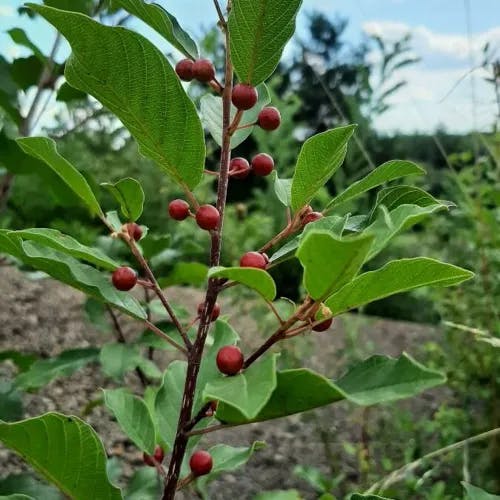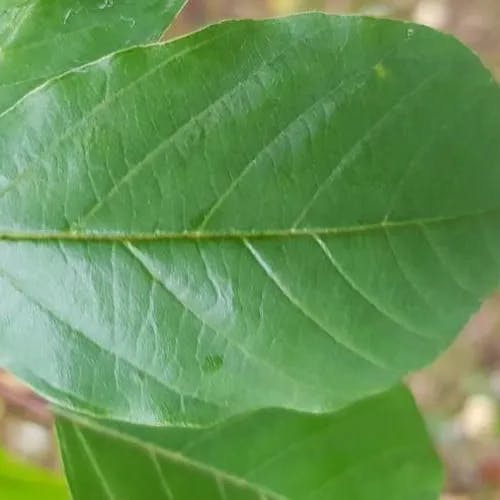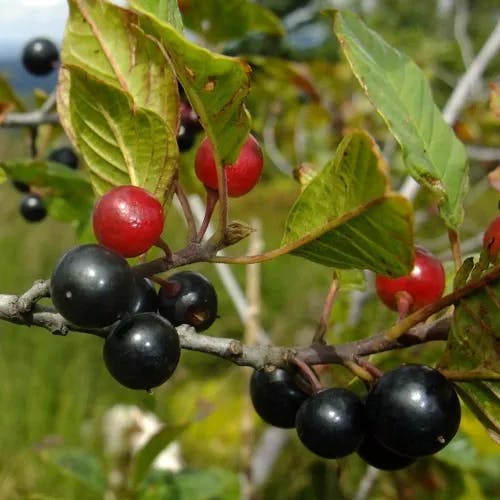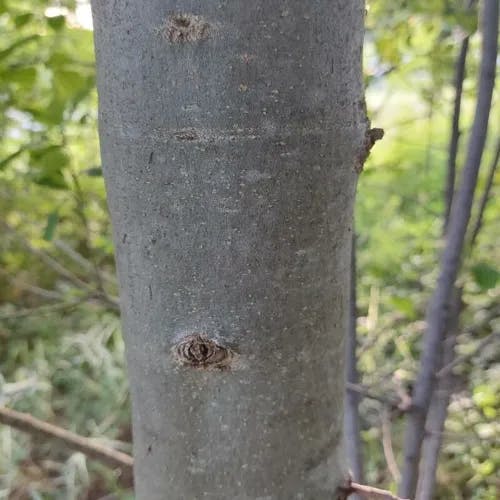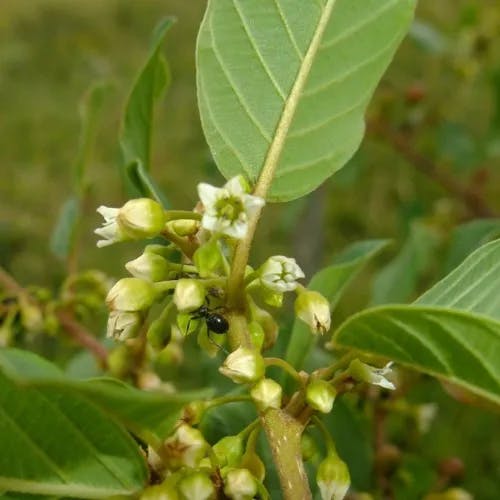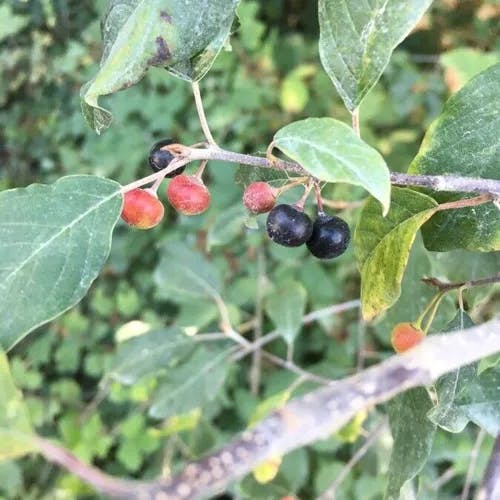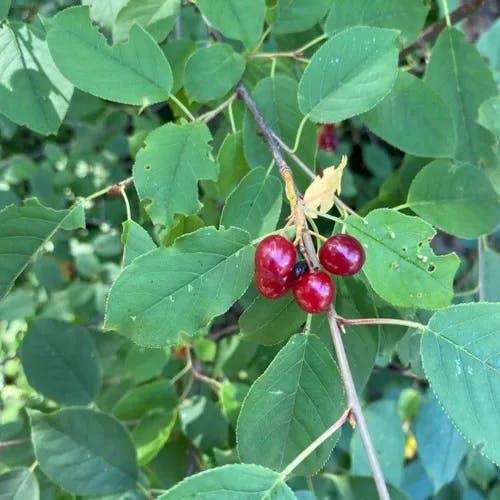A deciduous shrub or tree constituent of the plant family Rhamnaceae, taxonomically termed Frangula alnus, indigenously prosper in Europe, North Africa, and Western Asia. This plant can attain 3-6 meter height. Frangula alnus generates greenish-yellow small flowers in late spring or initial summer, blooming in clusters. The flowers' coloration may demonstrate trivial variances contingent on exact cultivar. Its leaves, growing oppositely on twigs, manifest an elliptical form with even margins. The folioles exhibit dark green pigmentation, transforming to yellow in autumn. The shrub yields small, circular, black berries, initially green, that ripen in late summer and early fall. Though not comestible for humans, these berries furnish critical sustenance for avian wildlife. Regarding cultivation prerequisites, Frangula alnus favors humid, freely draining earth, tolerating both direct sunlight and partial shade. It is comparatively facile to propagate through seeds or cuttings. The appellation Frangula originates from the Latin verb frango denoting
0
0
